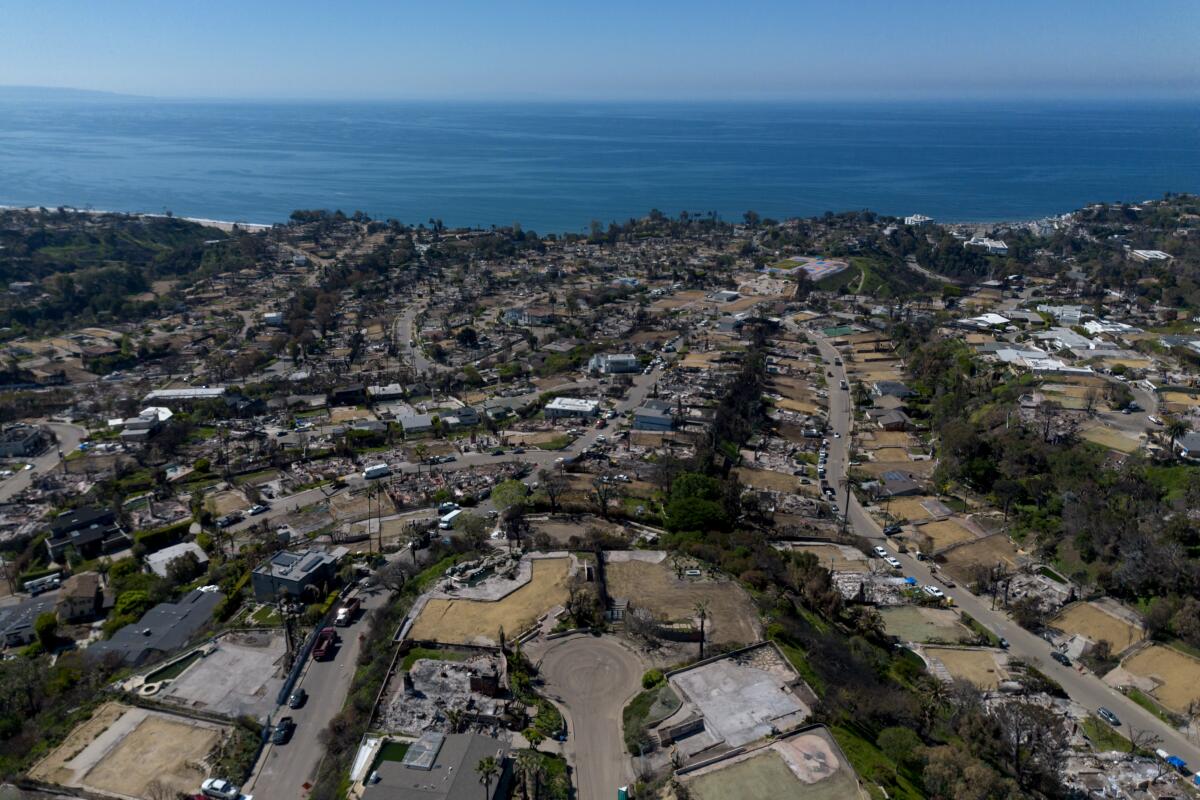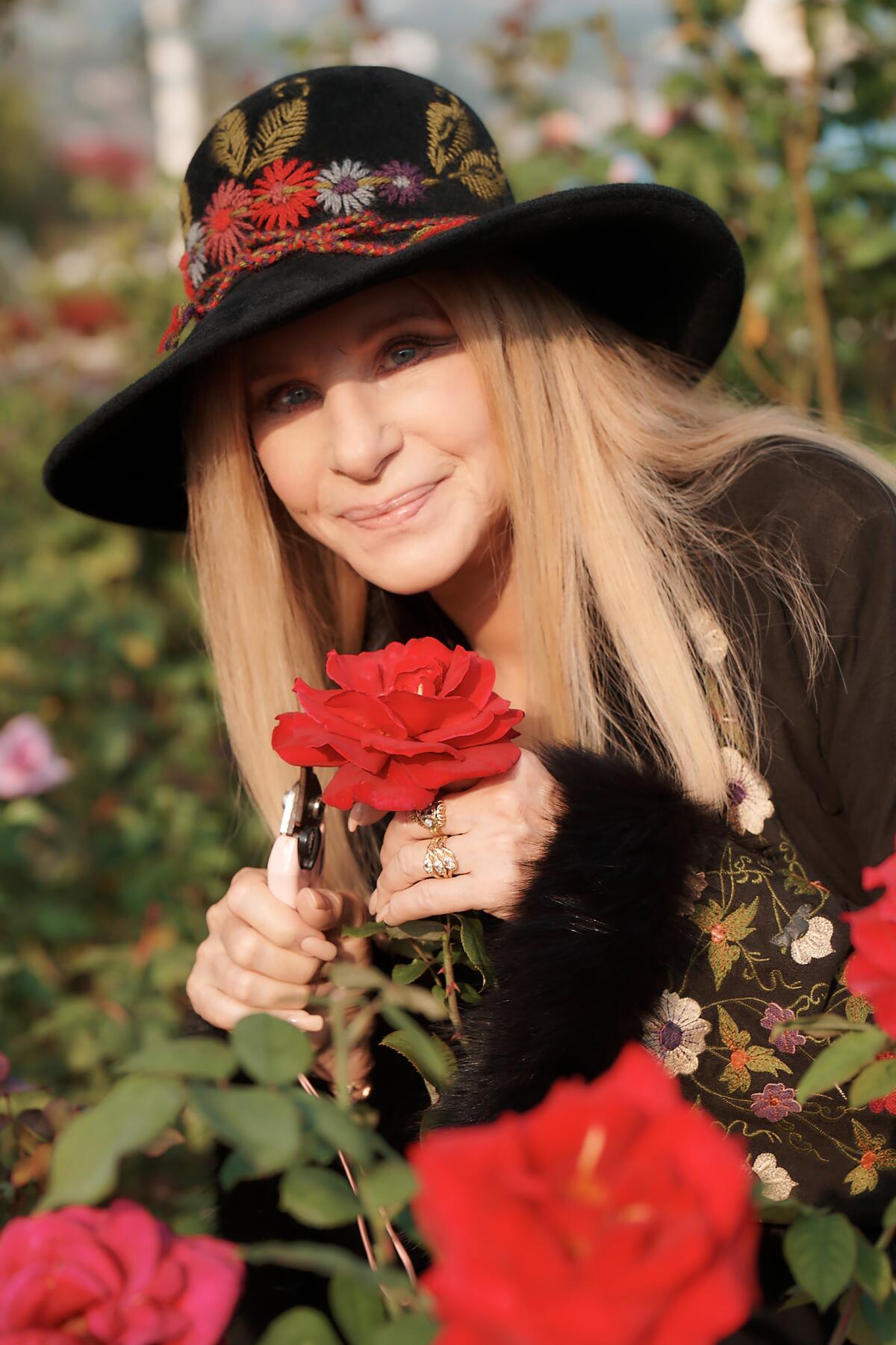California’s insurer of last resort is in crisis — and you could end up paying for it

- Share via
Good morning. Here’s what you need to know to start your day.
- Is California’s FAIR Plan working? Fire victims have complaints.
- With Head Start in jeopardy, Trump administration threatens child care for 800,000 kids.
- Cheech & Chong light up the big screen once more in “Cheech & Chong’s Last Movie,” which hits theaters Friday. Will it be their last joint?
- And here’s today’s e-newspaper.
You're reading the Essential California newsletter
The most important California stories and recommendations in your inbox every morning.
You may occasionally receive promotional content from the Los Angeles Times.
Homeowners are paying the price for California’s risky insurance market
If California property owners are denied coverage from commercial insurance companies, they turn to the state’s insurer of last resort.
Ratepayers on the FAIR Plan are typically hit with higher premiums for homes and other properties deemed to hold higher risk of catastrophic fire, paying more for basic coverage.
As traditional insurance companies retreated from an increasingly risky California market, statewide enrollment in the FAIR plan surged, nearly doubling between September 2021 and September 2024.
And as Times reporter Laurence Darmiento and data journalist Sandhya Kambhampati lay out in a new Times subscriber exclusive, residents in Pacific Palisades and Altadena were part of that swell.
Among properties in the Palisades and Eaton fire zones, the FAIR Plan’s rolls shot up last year by a combined 47% to 28,440 homes, they reported, nearly double the properties enrolled in 2020.
Now many fire survivors who lost their homes are relying on the insurer of last resort to help them recover from their worst nightmare.
“For many victims of the L.A.-area wildfires, it was the only available insurance: Four ZIP Codes in the fire-affected zones enrolled more than a third of their households in the state plan,” Laurence and Sandhya wrote. “But the backup insurance has not lived up to its promise, drawing numerous complaints among policyholders about delays in payments and other issues.”
California’s insurance crisis reaches a tipping point
Back in 2023, Allstate and State Farm announced they would stop offering new policies for properties in the Golden State. Officials from State Farm — the state’s longtime top home insurer — cited “rapidly growing catastrophe exposure and a challenging reinsurance market.”
The insurers’ actions were a response to what scientists have been telling us: Human-caused climate change is intensifying wildfires and other environmental disasters. Covering homes in increasingly dry, fuel-rich forests, on cliffs that don’t stay put and at the edge of the coast as sea levels rise is a business that’s only getting riskier.
The pullback by big insurers sparked that surge in FAIR Plan enrollment, but the state’s exposure grew larger than it was designed to be, Laurence and Sandhya noted.
“The FAIR Plan was established by the Legislature in 1968 to offer basic insurance in urban and fire-prone neighborhoods where it was not available,” they wrote. “It was not meant to be a large participant in the state’s home insurance market, but a string of disastrous wildfires over the last decade has spooked private insurers.”
As of March, there are 556,000 homeowner policies and nearly 18,000 commercial policies on the FAIR Plan, “making it one of the state’s biggest home insurers and exposing it to large losses,” they added.

The FAIR Plan’s losses could end up costing ratepayers across the state
To date, FAIR Plan officials say they’ve received about 5,280 damage claims related to the Palisades and Eaton fires and paid out more than $2.5 billion to policyholders, my colleagues reported.
“The plan expects that the Jan. 7 fires will cost it an estimated $4 billion,” they noted.
In the face of those losses, the program is now seeking a $1-billion bailout, which would be initially paid for by assessing commercial insurers that operate in the state.
But if that happens, policyholders across California could end up paying more, as a new state policy would allow State Farm, Allstate and other insurance companies to recoup half of their assessments by charging their ratepayers.
You can read more from Laurence and Sandhya in their Times subscriber exclusive.
Today’s top stories

With Head Start in jeopardy, the Trump administration threatens child care for 800,000 kids
- A leaked draft of the administration’s budget proposal for the Department of Health and Human Services would defund Head Start and phase the program out by 2026, a move that would slash a crucial safety net for families who otherwise could not afford child care and the other comprehensive services they receive.
‘It is time for you to leave’: DHS mistakenly sends notices to U.S. citizens
- An email sent to a U.S.-born immigration attorney said, “Do not attempt to remain in the United States — the federal government will find you.”
- The Department of Homeland Security acknowledged that some emails may have been sent to unintended recipients.
What else is going on
- The Real ID deadline is coming up. What to do if you don’t have yours yet.
- ‘Enough is enough’: Chainsawed trees spark anger over downtown L.A.’s decline.
- The State Bar of California admits it used AI to develop exam questions, triggering new furor.
- Trump stopped federal funding to Maine over transgender athletes. Could California be next?
- Money from new taxes will soon dwarf the billions spent on homelessness in last decade. Who’s watching over it?
- Los Angeles remains the nation’s smoggiest city for the 25th time in 26 years, despite progress.
Get unlimited access to the Los Angeles Times. Subscribe here.
Commentary and opinions
- Is there a Republican governor in California’s near future? Some see the GOP in its best position to win the California governorship in years, columnist Mark Z. Barabak writes.
- Archbishop Gomez, you still have time. Follow Pope Francis’ example, writes columnist Gustavo Arellano.
- Pope Francis was a climate hero. Trump’s reign gives his words extra meaning, columnist Sammy Roth writes.
- This genetics firm didn’t resurrect the extinct dire wolf, but did achieve a breakthrough in hype, writes columnist Michael Hiltzik.
This morning’s must reads

YouTube turns 20 years old. How it changed TV as we know it. From modest beginnings, the site opened the gates for users around the world to post funny, viral videos that could take the internet by storm, racking up millions of views and earning some millions of dollars. YouTube has evolved into not merely a tech operation, but also a formidable force in television.
Other must reads
- Relive a Y2K quinceañera in L.A., in all its nostalgia and tenderness.
- Charged with selling state secrets to the Soviets, a bumbling FBI agent had a novel defense.
- Jon Bernthal wants to bring Broadway-caliber theater to Ojai: It’s ‘always been a dream of mine.’
- At Puppy Fades dog salon, the formerly incarcerated get a second chance.
How can we make this newsletter more useful? Send comments to essentialcalifornia@latimes.com.
For your downtime

Going out
- 🕺 He calls himself the Gay Choreographer. His L.A. pop star dance classes help people find the diva within.
- 🖼️ John Waters’ one-man show comes to the Wallis in Beverly Hills: ‘I’m so respectable, I could puke.’
- 🎥 Cheech & Chong light up the big screen once more in “Cheech & Chong’s Last Movie,” which hits theaters Friday. Will it be their last joint?
Staying in
- 📖 Joan Didion’s observations during an especially fraught personal period have been published in a new book, ‘Notes to John.’
- 🥔Here’s a recipe for spring potato salad with green garlic dressing.
- ✏️ Get our free daily crossword puzzle, sudoku, word search and arcade games.
A question for you: What would you ask your favorite author?
With the L.A. Times Book Festival coming up this weekend, we want to know what you’d ask your favorite authors.
Email us at essentialcalifornia@latimes.com, and your response might appear in the newsletter this week.
And finally ... from our archives

On April 24, 1942, singer-actor-director Barbra Streisand was born. In March, The Times’ Jeanette Marantos wrote about a brand-new rose that popped up in Streisand’s garden. Only about 2,000 of the hybrid tea rose bushes, dubbed Barbra’s Baby, are available so far. More should be available in years to come.
Have a great day, from the Essential California team
Ryan Fonseca, reporter
Andrew Campa, Sunday reporter
Kevinisha Walker, multiplatform editor
Hunter Clauss, multiplatform editor
Christian Orozco, assistant editor
Karim Doumar, head of newsletters
Check our top stories, topics and the latest articles on latimes.com.
Sign up for Essential California
The most important California stories and recommendations in your inbox every morning.
You may occasionally receive promotional content from the Los Angeles Times.







